Cannabis 101
Here are the need-to-know bare-basics of Cannabis boiled down to 6 segments!
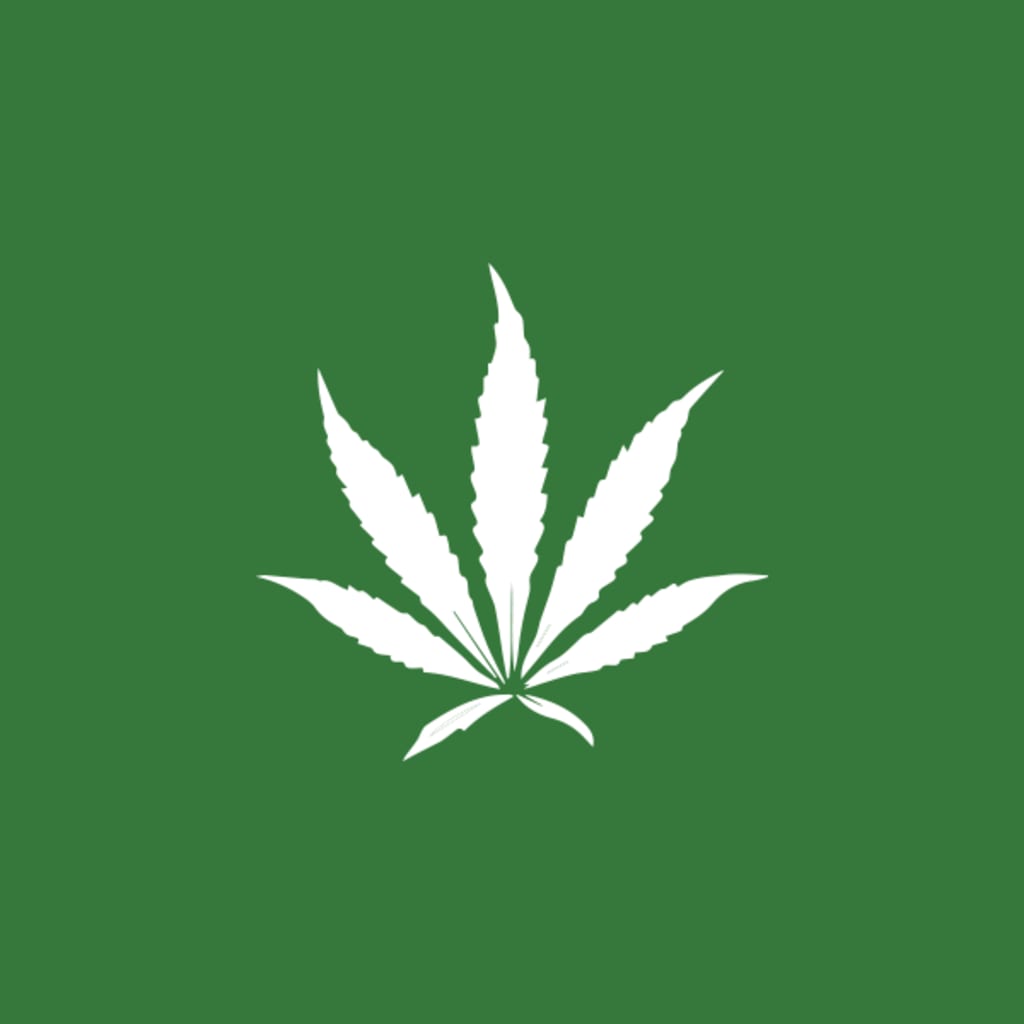
Important to Know:
This post was made in October of 2017. If you are viewing this at a later date, some facts and laws may have changed, so do your own research if this post does not provide accurate or relevant answers to your questions!
There is much more to learn about Cannabis and how it affects individuals. The key to the Cannabis legalization and normalization movement is to make Cannabis, which is used by adults (either legally or illegally), as safe as possible. This is to help ensure it interacts with society in a positive way, just like alcohol, tobacco, and caffeine!
Cannabis has only recently been viewed as something more than a Schedule I drug (U.S.) in the scientific world, and much more research must be done in order to find the true benefits of Cannabis, as well as the negative effects, for both short term and long term use. If you use or plan to use cannabis, please educate yourself, be mindful of others, do so in a legal way, and always use in moderation!
Names
There are many names for Cannabis, but there's a difference between legit names and street names .
For starters, I want to use proper terms in this article and get rid of any street names that negatively associate with cannabis. Here’s a list of a few terms that should and shouldn’t be used:
Cannabis, ganja, hemp, oil, and buds are proper terms.
Street names like pot, weed, marijuana, dope, reefer, and chronic demonize the plant and should be avoided.
People in the legal industry are trying to navigate away from street names in order to eliminate mass false stigma of the plant and its consumption methods. Although marijuana is its common name, I personally do not think we should call it marijuana anymore because that name is tied to the reason why cannabis became illegal in the first place.
Part 1: A Brief History
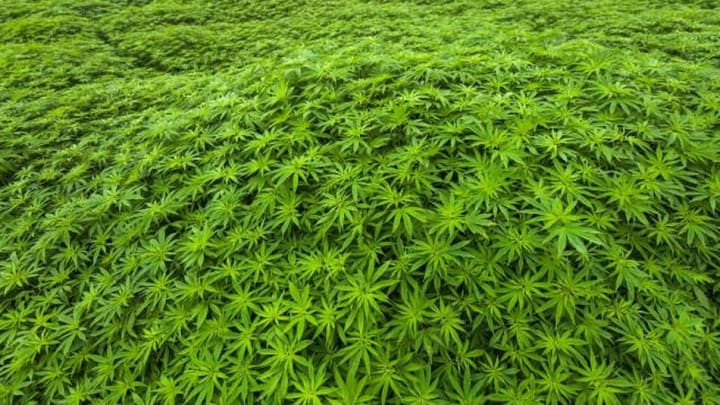
Boiled down to basics, cannabis is a plant that sprouts out of the ground, just like your roses, tulips, and daisies. The Genus Cannabis is found in the family Cannabaceae, and has three species, or strains (Sativa, Indica, and Ruderalis).
A study in 2014 coming out of the University of Kansas traces the origins of Cannabis back to native central Asia, somewhere around Mongolia or Southern Siberia. This study says cannabis is thought to be one of man’s earliest cultivated plants, fruitful in nutrient rich areas and left behind by hunter-gatherers. From there it made its way to the Middle East and then spread throughout the world over many centuries. Many documents throughout history show that people have historically used Cannabis for medicinal purposes, such as bodily healing for depression, appetite, pain-relief, and sexual stimulation.
Hemp and the buds we use for medicinal purposes are completely different. “Hemp refers to strains of Cannabis that have been bred specifically for fiber used for clothing and construction, oils, and topical ointments, and nutritional benefits … that don’t involve intoxication.” — Agata Blaszczak-Boxe, LiveScience.com
Hemp is used for paper, ropes (for its strength), hemp seed oils, and hemp seed as food.
American production of hemp was encouraged by the government in the 17th century for the production of rope, sails, and clothing. Even in 1619 the Virginia Assembly passed legislation requiring every farmer to grow hemp.
(Source)
Part 2: The Plant & Flower
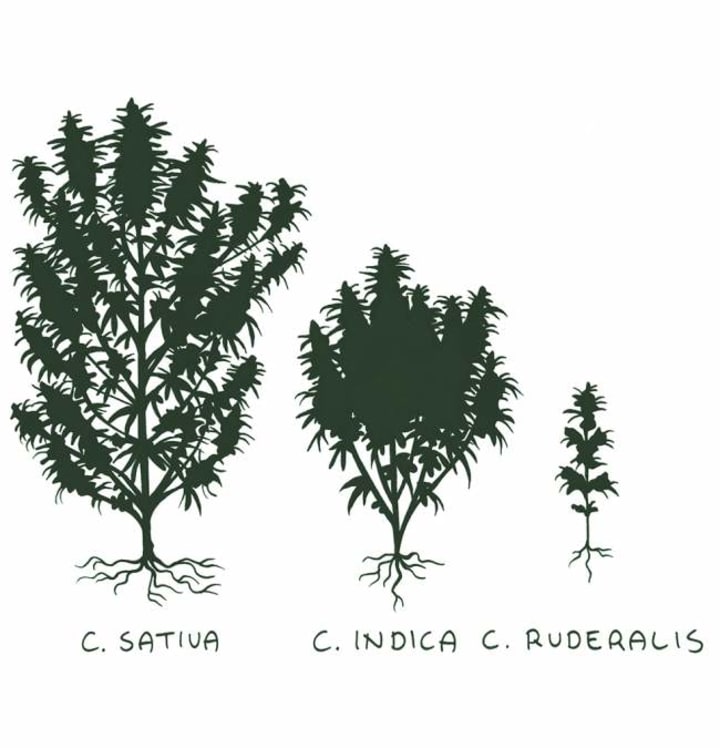
Now that we know cannabis has been alongside humans for centuries, we can dive deeper into what makes up the plant. The first thing people should know is the differences of strain type. There are 3 strains: Cannabis Indica, Cannabis Sativa, and Cannabis Ruderalis. Cannabis hybrids play a big role in the industry as well, and they are a mix of two or more strains grown together.
Cannabis Indica is known for its sedating effects. When people think of how the so-called “lazy stoners” act, it is probably due to the effects of Indica. Although all strains can be grown indoors and outdoors, Indica is typically grown indoors. This is due to its shorter grow length and bushy aesthetics. It’s easy to remember the difference between indica and sativa by the saying “In-da-couch.”
 Cannabis Sativa is basically a polar opposite of Indica. They are typically grown outdoors due to its tall, thin, tree-like structure. Sativa’s rejuvenating and cerebral-boosting effects have a user feeling uplifted.
Cannabis Ruderalis is a lesser-known species, as its THC potency and effects are not attractive to users. However, Ruderalis is attractive to hybrid growers due to its auto flowering trait.
Cannabis Hybrids are a mix of any strains, with varying percentages of each strain. For example, the Blue Dream strain is a 50/50 hybrid, meaning it contains an equal amount of Indica and Sativa. OG Kush contains more percentage of Indica than Sativa, which is why you get a spacey feeling without immediately going to sleep. Hybrids have many varying effects, which is why it's the most common sale at medical and recreational dispensaries.
Male vs. Female
You can’t make plants without knowing their gender! Female plants are the ones cannabis growers should be focusing on, as they are the only gender to produce the buds and cannabinoids we humans love to use. Male plants simply have no role in the Cannabis-bud growing process. In fact, they are removed immediately from mass-grows because they spread pollen to the females, causing them to produce seeds instead of THC-rich buds.
Male plants spread pollen to females. If females receive the pollen, they can only produce seeds, which we don’t usually want. Males and females are separated in mass grows. Females are the only Cannabis that produces the necessary THC, CBD, and other cannabinoids necessary for human use.
Plant Anatomy
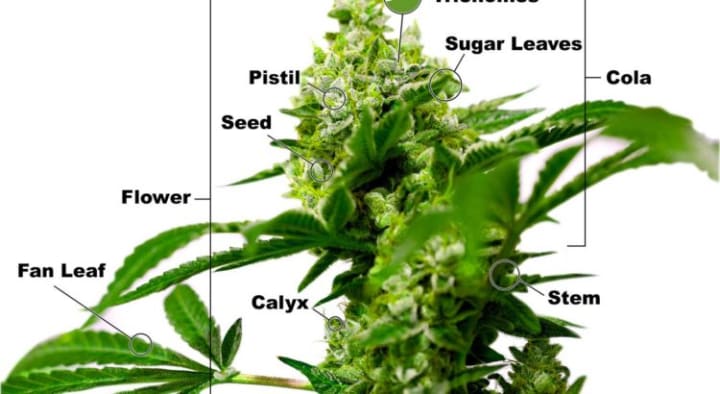
Cannabis plant anatomy can be complex, but these are the bare-bone basics you should know:
1: Stems and Nodes
Cannabis plants grow from the ground up with their long stalks, otherwise known as stems. Fan leaves can be found all over the plant, and most people are familiar with these fan leaves. The sites from which the fan leaves grow are called nodes.
2: Colas
Colas are found throughout the growing plant and are the epicenters for the buds used in the harvest.
3: Calyx
Since colas are another word for location, Calyxes are the actual bud itself. The calyx is what it’s all about.
4: Pistils
The pistils are white hairs during the growing process found within the calyx. They turn yellow, amber, and brown as the plant matures. They serve only for reproductive and visual purposes and do not contribute to the aroma or potency of Cannabis.
5: Trichomes
Trichomes are probably the most important part of the Cannabis plant. They are nearly microscopic, translucent resin glands. They produce cannabinoids, which will be discussed more in the next section.
Part 3: Science
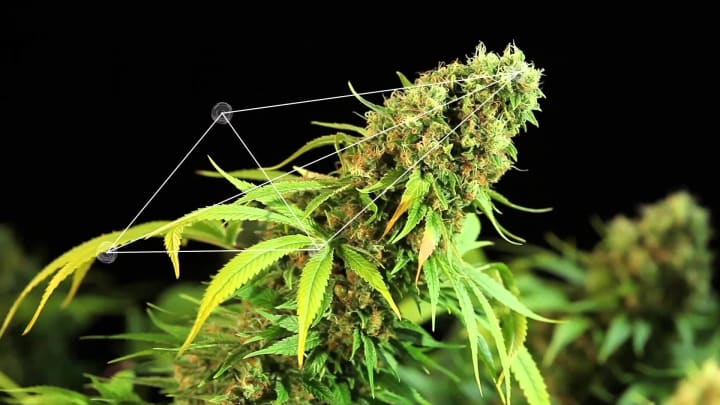
As mentioned before, one of the main reasons for cannabis cultivation is to produce product containing cannabinoids. There are over 100 different cannabinoids known as of 2017, but the two that most people focus on are THC and CBD. Some other well-known Cannabinoids include CBC, CBN, THCU, and CBG. When ingested, cannabinoids enter the body through what is known as the Endocannabinoid system. That’s right! Your body literally has a system for you to properly ingest Cannabis.
THC is the main psychoactive that gets people in the “high” or “stoned” state. I like to call it medicated. Chemically, it is known as trans-delta 9-tetrahydrocannabinol. This could get complicated, so stay with me.
“[THC] works by imitating the effects of anandamide, a neurotransmitter produced naturally by the human body to help modulate sleeping and eating habits, as well as the perception of pain.” (Source)
Effects include relaxation, altered senses of sight, smell, hearing, fatigue, hunger, and reduced aggression. THC is known to help treat side effects of chemotherapy, Multiple Sclerosis, Glaucoma, AIDS, and spinal injury.
CBD is the other primary chemical people should know about Cannabis. It has no psycho-active effects, which means a user can’t get “high” off it. In fact, it counteracts the psycho-active effects of THC. CBD has the same chemical formula as THC, but the atoms are arranged differently. Effects include reduction of psychotic symptoms, relief from convulsions and nausea, decreased anxiety, and decreased inflammation. CBD is known to help treat arthritis, alcoholism, chronic pain, Schizophrenia, social anxiety disorder, depression, and the side effects of cancer treatment. (Source)
Remember, cannabinoids are different from CBD (cannabidiol)! CBD falls in line with THC, and both are categories of cannabinoids. The cannabinoids are secreted through the trichomes on the cannabis plant and used to fight off pests, but there may be other reasons for their creation, like UV ray protection. Recent theories suggest THC is used to protect from bacteria and funguses.
The Endocannabinoid system is very complex, so here’s the simplest things you need to know. The goal is always the same: homeostasis, the maintenance of a stable internal environment despite fluctuations in the external environment. With its complex actions in our immune system, nervous system, and all of the body's organs, it’s literally a bridge between body and mind. By understanding this system we begin to see a mechanism that explains how states of consciousness can promote health or disease. Researchers have identified 2 cannabinoid receptors in the body: CB1 and CB2. Many tissues contain both CB1 and CB2 receptors, each linked to a different action. (Source)
Part 4: Methods of Consumption
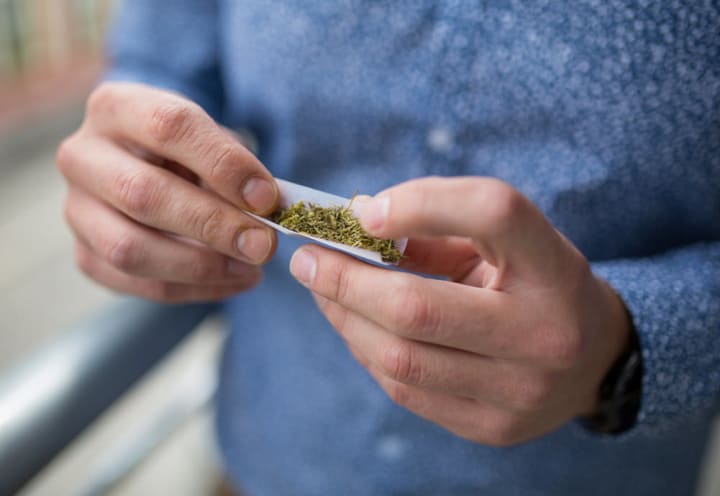
There are various forms of ingestion of cannabis. These include smoking it, vaping it, eating it, topical or transdermal ingestion, or sublingual intake (or, in liquid form through the mouth). THC is the main cannabinoid when eating, smoking, and vaping, and are used to experience the psychoactive effects. Topical/transdermal and sublingual intake are commonly used for medicinal purposes and involves CBD more than THC.
You can smoke cannabis in a variety of ways, including hand pipes (or bowls), water pipes (or bongs), rolling papers (or Joints, Js), tobacco leafs (Blunts or Ls), hookah, and homemade products (like fruit bowls). Vaporizers are a great alternative to smoking, because they only heat up the buds to a certain temperature so THC is extracted without all the harmful carcinogens that come from smoking. Edibles are made at home through cooking. Edibles can be put into any foods that cook with butter or oil. This is why brownies and candy-like edibles are known commonly in the cannabis community. Transdermal and sublingual ingestion are mainly used for CBD intake, for treatments that require the CBD.
Kief, hash, and oil are some products of the fully cultivated cannabis plant.
Kief, also known as dry sift or pollen, are the tiny, sticky crystals that are found on trichomes.
Hash is made from kief, and contains high amounts of THC.
There are many different kinds of oils that can be made from Cannabis. CBD oils are commonly used for medicinal treatments.
(Source)
Part 5: Jobs and Careers
The cannabis industry is booming in the United States right now. Therefore, many jobs have sprouted in the past decade. Here is a list:
Industry-based jobs include: Cultivation (grower), Bud Tender, Trimmer, Paraphernalia, Payment processing, Real estate agents, Security systems, Software companies, Lab testing equipment and services, Edible cannabis chef or business owner, Smoking paraphernalia sales and design, Cannabis tour groups, Cannabis consultants, Cannabis insurance representatives, Dispensary Manager, Courier or Delivery Driver, Retail Shop Owner, Seed Harvester, Glass Blower, Review Writer, Software Creator, Website Design
Basic jobs that help include: Sales, Marketing, Accounting, Public relations, Insurance, Software, Security, Advertising, Financial services, Realtors, Lawyers, Doctors, Managers
Part 6: Laws and Legalities
Currently in 2017, the United States deems cannabis illegal on the federal level, meaning it is completely illegal in all 50 states. However, each state is allowed to vote for their own cannabis rights. So in one state, you are completely free and legal to purchase and consume marijuana, but in another if you are found with it by the police, you could face charges or even jail time. It’s amazing that depending on your location in America, you are either a criminal or a freely using, law-abiding citizen. We as a nation of people need to console this issue as soon as possible. Half the states right now allow medicinal Cannabis, and 8 states allow recreational commerce and consumption for people over the age of 21, which are California, Alaska, Nevada, Oregon, Washington, Colorado, Maine, and Massachusetts.
Every country differs in their laws for cannabis. Uruguay has full legalization in the entire country, and Canada is on its way there.
FAQ
When it becomes legal, should I go out and use it now that I feel I can?
Cannabis is not for everyone! Just like alcohol and tobacco, cannabis consumption is not something everyone will want to use, and requires moderation, especially for beginners. It depends how curious you are, and if you want to experience a “high.”
Can cannabis kill you?
On record, there has been 0 recorded direct deaths from Cannabis consumption throughout history. For alcohol and tobacco, that’s a different story.
Why is cannabis illegal in the United States?
This has a very long answer, but put simply, the cannabis industry was in the way of rich people wanting to monopolize their wealth throughout the country in the 1930s. Big money and corporations wanted it banned so their industries can thrive, so they did just that. Then Nixon’s drug war happened and we all know how that turned out. Cannabis has been alongside humanity from the beginning and should have never been outlawed! You can read more at these links.
Where We Were, Where We Are Now, and Where We Are Going
Humanity is on the cusp of not only the cannabis revolution, but monetary, technological, and psychological revolutions as well. So yes, this means that great change in all aspects of life is coming fast. Hopefully we as a species have learned from our mistakes of the past, and can continue to spread love, happiness, sympathy, and ingenuity. Thank you for reading! Please share with your cannabis lovers and people unknowledgeable about this plant!
(I may have missed some deeper facts, but I wanted to make this post for the newbies or veterans that don’t know the terms and how deep the cannabis industry goes! If I got something wrong or you feel I missed something important, please let me know!)
Disclaimer: I in no way condone the illegal consumption, possession or growing of cannabis/marijuana. You should consult a doctor or physician before using cannabis as a medicine and for medicinal treatment. Recreational marijuana in the United States is to be only sold to and consumed by adults over 21 years of age, and medicinal marijuana should only be obtained by patients with a doctor's recommendation (registered doctor depending on state). This article is for educational purposes only.
Fair Use Notice: This post may contain some copyrighted material whose use has not been authorized by the copyright owners. I believe that this not-for-profit, educational, and/or criticism or commentary use on the Web constitutes a fair use of the copyrighted material (as provided for in section 107 of the US Copyright Law). If you wish to use this copyrighted material for purposes that go beyond fair use, you must obtain permission from the copyright owner. Fair Use notwithstanding I will immediately comply with any copyright owner who wants their material removed or modified, wants me to link to their web site, or wants me to add their photo.
About the Creator
Paul Benjamin
I love video games
and Cannabis
and Basketball
and Reading
and Economics






Comments
There are no comments for this story
Be the first to respond and start the conversation.